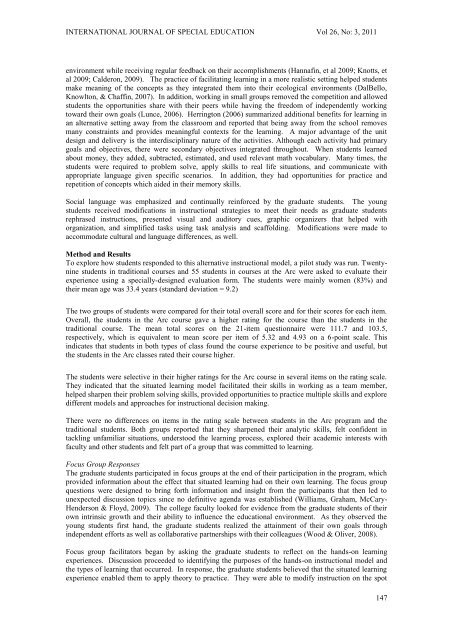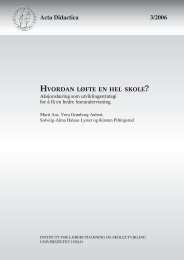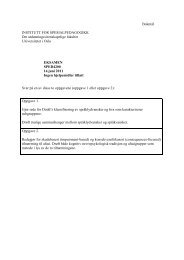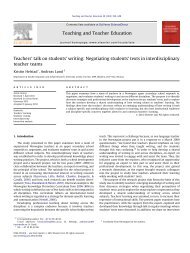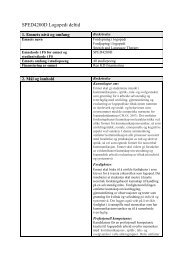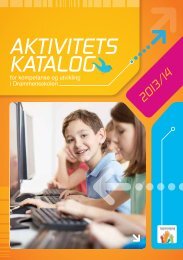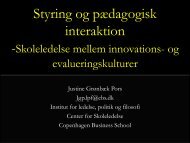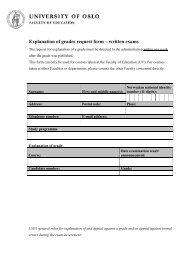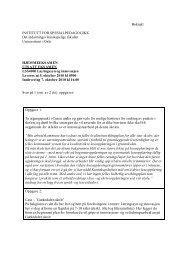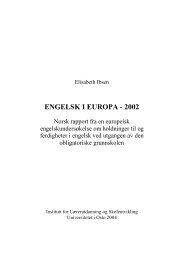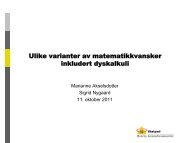International Journal Special Education
International Journal Special Education
International Journal Special Education
Create successful ePaper yourself
Turn your PDF publications into a flip-book with our unique Google optimized e-Paper software.
INTERNATIONAL JOURNAL OF SPECIAL EDUCATION Vol 26, No: 3, 2011environment while receiving regular feedback on their accomplishments (Hannafin, et al 2009; Knotts, etal 2009; Calderon, 2009). The practice of facilitating learning in a more realistic setting helped studentsmake meaning of the concepts as they integrated them into their ecological environments (DalBello,Knowlton, & Chaffin, 2007). In addition, working in small groups removed the competition and allowedstudents the opportunities share with their peers while having the freedom of independently workingtoward their own goals (Lunce, 2006). Herrington (2006) summarized additional benefits for learning inan alternative setting away from the classroom and reported that being away from the school removesmany constraints and provides meaningful contexts for the learning. A major advantage of the unitdesign and delivery is the interdisciplinary nature of the activities. Although each activity had primarygoals and objectives, there were secondary objectives integrated throughout. When students learnedabout money, they added, subtracted, estimated, and used relevant math vocabulary. Many times, thestudents were required to problem solve, apply skills to real life situations, and communicate withappropriate language given specific scenarios. In addition, they had opportunities for practice andrepetition of concepts which aided in their memory skills.Social language was emphasized and continually reinforced by the graduate students. The youngstudents received modifications in instructional strategies to meet their needs as graduate studentsrephrased instructions, presented visual and auditory cues, graphic organizers that helped withorganization, and simplified tasks using task analysis and scaffolding. Modifications were made toaccommodate cultural and language differences, as well.Method and ResultsTo explore how students responded to this alternative instructional model, a pilot study was run. Twentyninestudents in traditional courses and 55 students in courses at the Arc were asked to evaluate theirexperience using a specially-designed evaluation form. The students were mainly women (83%) andtheir mean age was 33.4 years (standard deviation = 9.2)The two groups of students were compared for their total overall score and for their scores for each item.Overall, the students in the Arc course gave a higher rating for the course than the students in thetraditional course. The mean total scores on the 21-item questionnaire were 111.7 and 103.5,respectively, which is equivalent to mean score per item of 5.32 and 4.93 on a 6-point scale. Thisindicates that students in both types of class found the course experience to be positive and useful, butthe students in the Arc classes rated their course higher.The students were selective in their higher ratings for the Arc course in several items on the rating scale.They indicated that the situated learning model facilitated their skills in working as a team member,helped sharpen their problem solving skills, provided opportunities to practice multiple skills and exploredifferent models and approaches for instructional decision making.There were no differences on items in the rating scale between students in the Arc program and thetraditional students. Both groups reported that they sharpened their analytic skills, felt confident intackling unfamiliar situations, understood the learning process, explored their academic interests withfaculty and other students and felt part of a group that was committed to learning.Focus Group ResponsesThe graduate students participated in focus groups at the end of their participation in the program, whichprovided information about the effect that situated learning had on their own learning. The focus groupquestions were designed to bring forth information and insight from the participants that then led tounexpected discussion topics since no definitive agenda was established (Williams, Graham, McCary-Henderson & Floyd, 2009). The college faculty looked for evidence from the graduate students of theirown intrinsic growth and their ability to influence the educational environment. As they observed theyoung students first hand, the graduate students realized the attainment of their own goals throughindependent efforts as well as collaborative partnerships with their colleagues (Wood & Oliver, 2008).Focus group facilitators began by asking the graduate students to reflect on the hands-on learningexperiences. Discussion proceeded to identifying the purposes of the hands-on instructional model andthe types of learning that occurred. In response, the graduate students believed that the situated learningexperience enabled them to apply theory to practice. They were able to modify instruction on the spot147


